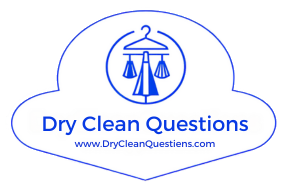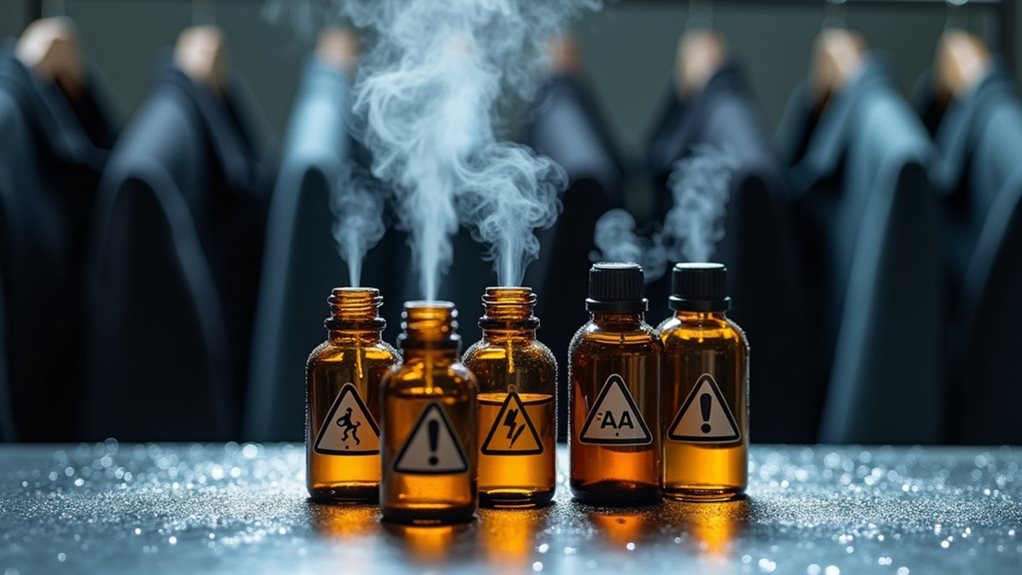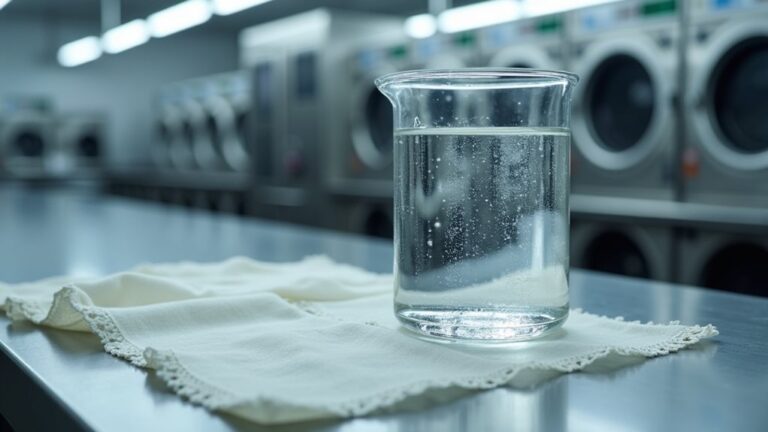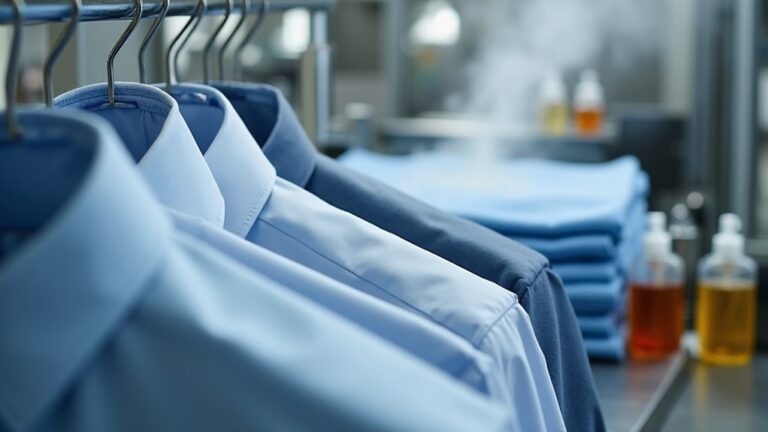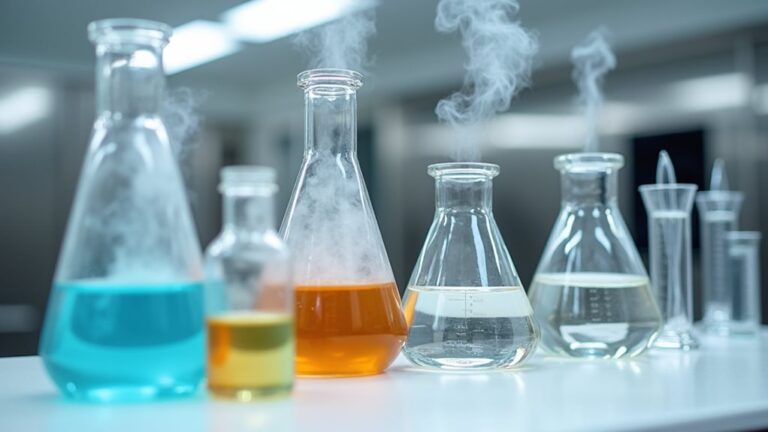Yes, traditional dry cleaning can be toxic to your health and environment. Most cleaners use perchloroethylene (perc), a human carcinogen that builds up on your clothes with each cleaning cycle, literally bringing cancer-causing chemicals into your home. These solvents also contaminate groundwater, soil, and air for weeks after cleaning. However, you’re not stuck with toxic options—eco-friendly alternatives like liquid carbon dioxide cleaning and wet cleaning methods offer safer solutions that’ll protect your family’s health without sacrificing garment care.
The Hidden Dangers of Perchloroethylene (Perc) in Traditional Dry Cleaning
When I first learned that my favorite wool blazer was practically marinating in a cancer-causing chemical every time I dropped it off at the dry cleaner, I’ll admit I felt a bit betrayed by an industry I’d trusted for years.
Perchloroethylene, the solvent used in traditional dry cleaning, isn’t just another toxic chemical—it’s classified as a human carcinogen by experts.
What really got me was discovering that residual perc stays on your clothes, building up with each cleaning cycle, which means you’re fundamentally wearing these health effects home.
While the Environmental Protection Agency is finally reassessing this mess, I started researching safer alternatives because honestly, my blazer shouldn’t come with a side of cancer risk. 🤷♀️
The good news is that many modern dry cleaners now offer eco-friendly solvents and alternative cleaning methods that can effectively clean your garments without the health risks.
Environmental Impact: How Dry Cleaning Chemicals Contaminate Air, Water, and Soil
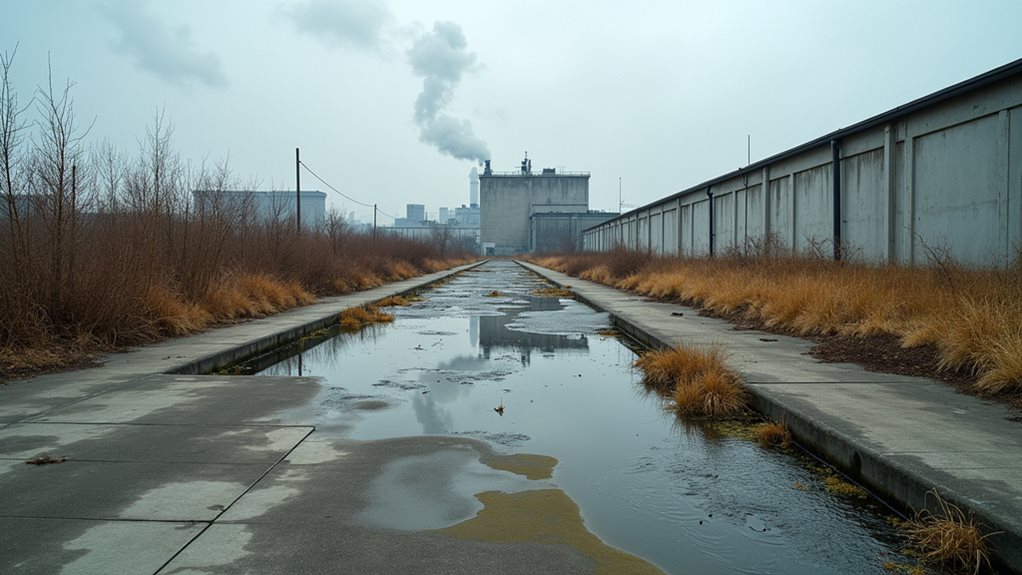
How devastating would it be to discover that your clothing choices aren’t just affecting your personal health, but they’re also quietly poisoning the planet one dry cleaning cycle at a time?
Those chemical solvents, particularly perchloroethylene, don’t just vanish after cleaning your favorite suit – they’re creating serious environmental impact that’ll make you think twice about traditional dry cleaning.
Chemical solvents from your dry-cleaned clothes don’t disappear – they’re quietly creating lasting environmental damage that extends far beyond your closet.
When toxic chemicals escape ventilation systems, they’re contaminating our air for weeks, while simultaneously seeping into groundwater and threatening drinking water sources for millions of people.
The soil contamination from improper disposal is disrupting entire ecosystems, and honestly, it’s pretty heartbreaking 😞.
Your clothes retain these chemicals too, creating a cycle of exposure that affects everything from plant life to agricultural productivity – which is why green dry cleaning alternatives are becoming crucial.
The industry’s reliance on petroleum-based solvents combined with energy-intensive operations creates a massive carbon footprint that extends far beyond the immediate chemical contamination.
N-Propyl Bromide: Another Harmful Chemical Found in Dry Cleaning Solvents
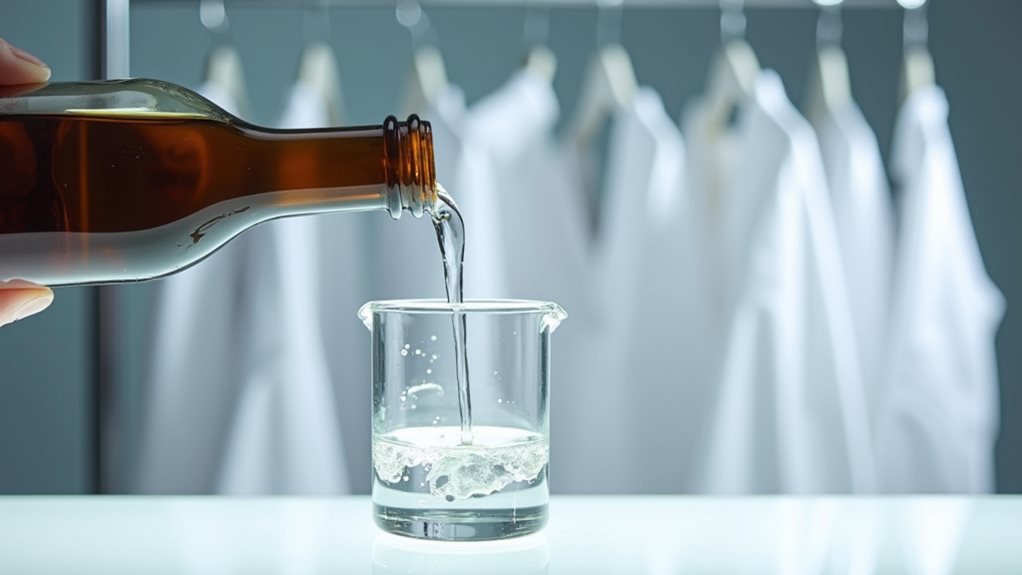
Although perchloroethylene gets most of the attention in dry cleaning horror stories, n-propyl bromide is quietly wreaking havoc as another toxic solvent that’s probably been cleaning your clothes without you even knowing it exists.
This sneaky chemical delivers a nasty punch of health risks, causing dizziness, nausea, and headaches when you’re exposed to it.
What’s scarier is that chronic exposure can damage your reproductive system and potentially increase your cancer-causing risk.
Like its infamous cousin perc, n-propyl bromide doesn’t stay put in dry cleaning shops – it leaks into our air, soil, and water, creating widespread environmental contamination that harms marine life.
To minimize exposure to these harmful chemicals, allow your freshly cleaned garments to air out before wearing them, as this simple step can significantly reduce the amount of toxic residue you absorb from wet cleaning methods.
That’s why I’m encouraging you to seek eco-friendly alternative cleaning methods whenever possible.
Safer Alternatives: Eco-Friendly Dry Cleaning Methods and Solutions
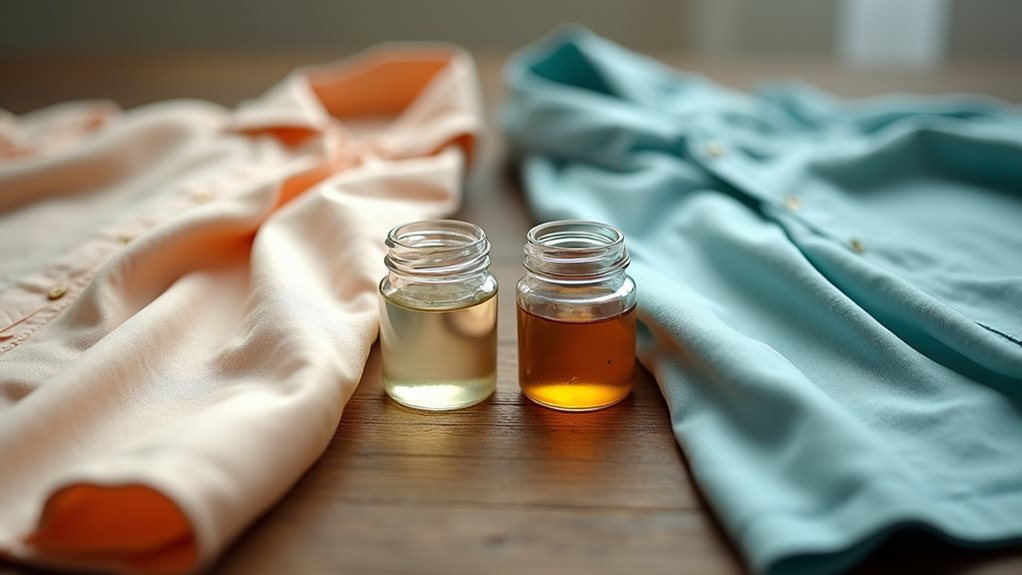
Since discovering the toxic reality of traditional dry cleaning chemicals, I’ve become something of a detective when it comes to finding safer alternatives that won’t compromise your health or turn your favorite silk blouse into an environmental hazard.
Eco-friendly dry cleaners now use liquid silicone (D5), which delivers chemical safety without sacrificing cleaning power—your dry-cleaned wool emerges spotless and residue-free.
Liquid silicone D5 technology proves you don’t have to choose between powerful cleaning results and chemical safety for your family.
I’ve also discovered liquid carbon dioxide cleaning and wet cleaning methods that eliminate harmful chemical residues entirely.
For budget-conscious folks like myself, at-home solutions work surprisingly well; I’ve successfully steamed “dry clean only” garments with impressive results.
These alternatives are gaining popularity as the industry moves away from perchloroethylene, the most commonly used traditional dry cleaning chemical that poses environmental and health concerns.
These safer alternatives protect both your family’s health and our planet’s future—a win-win that makes this former chemical-phobic parent sleep better at night.
Protecting Yourself: How to Choose Non-Toxic Dry Cleaning Services
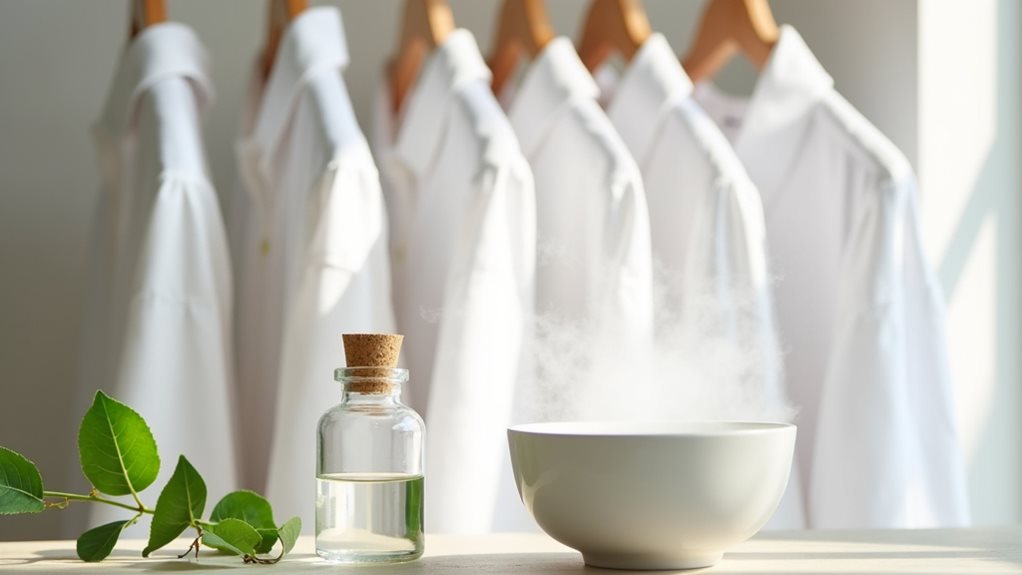
Armed with knowledge about safer alternatives, you’ll want to become a savvy consumer who asks the right questions before handing over your clothes and credit card.
Finding non-toxic cleaning solutions requires detective work, but your health’s worth the effort.
Here’s your eco-friendly dry cleaner checklist:
- Ask about cleaning solvents directly – Request specifics about their dry cleaning chemicals, looking for liquid carbon dioxide, wet cleaning, or biodegradable silicone instead of cancer-causing chemicals.
- Demand transparency – Reputable cleaners won’t hesitate sharing their eco-friendly methods and certifications.
- Seek organic dry cleaning services – Many offer convenient delivery options while using safer chemical cleaners.
- Look for environmental certifications – Labels indicating commitment to non-toxic practices reduce toxic residue exposure.
While traditional perchloroethylene (PERC) remains the industry standard due to its excellent cleaning properties, understanding which solvents your dry cleaner uses helps you make informed decisions about protecting your family’s health.
